What Shopify Plan Should I Choose for Dropshipping Success 2025
- Why Shopify is the Ultimate Platform for Modern Dropshipping Businesses
- How to Choose the Best Shopify Plan for Your Dropshipping Business
- Unique Strategies to Succeed in Dropshipping on Shopify
- Inspiring Success Stories: Learn from Top Shopify Dropshipping Stores
- Step-by-Step Guide to Start Dropshipping with Shopify
- Pitfalls to Avoid in Shopify Dropshipping
- Essential Tools and Resources for Shopify Dropshipping Success
Starting a dropshipping business can be a game-changer in 2025, and Shopify remains one of the best platforms to launch and grow your store. With its user-friendly interface, robust features, and flexibility, Shopify makes it easier for entrepreneurs to dive into the world of e-commerce. But what Shopify plan should I choose for dropshipping success? Choosing the right Shopify plan for your dropshipping business is crucial for maximizing growth. Let’s break down everything you need to know in this comprehensive guide.
Why Shopify is the Ultimate Platform for Modern Dropshipping Businesses
1.1 Powerful Features Tailored for Dropshipping Success
Shopify’s extensive suite of features is designed to make dropshipping seamless. With built-in tools like inventory management, secure payment gateways, and customizable themes, you can set up a professional online store in no time. But when determining what Shopify plan should I choose for dropshipping, it’s essential to evaluate how these features align with your goals.
For example, Shopify’s inventory management automatically syncs stock levels, ensuring that your store never sells items that are out of stock. Its secure payment gateways, including Shopify Payments, simplify transactions for both you and your customers, while customizable themes let you create a visually appealing store without needing advanced coding skills.
1.2 Expand Your Reach with Global and Local Capabilities
Dropshipping gives you the unique opportunity to sell to a global market, and Shopify’s features are built to support this expansion. The platform includes multi-currency options, enabling you to display prices in your customers’ local currencies, which builds trust and improves conversion rates. Global shipping calculators provide accurate shipping costs, reducing the chances of cart abandonment due to unexpected fees.
Additionally, Shopify supports seamless translation tools and apps that make it easy to offer a multilingual shopping experience. On the local side, Shopify’s tax calculators help you stay compliant with regional tax requirements, and local payment methods ensure convenience for domestic customers.
1.3 Tap Into a Thriving Community and Expert Resources
When you choose Shopify, you’re not just getting a platform that you’re becoming part of a vibrant and supportive community of entrepreneurs. Shopify’s forums are bustling with experienced store owners willing to share advice and tips. The Shopify Academy provides free educational resources, including step-by-step guides and video tutorials on everything from setting up your store to advanced marketing strategies.
Shopify also hosts regular webinars and events where you can learn from industry experts and connect with other business owners. These resources are invaluable, whether you’re just starting or looking to scale your dropshipping business to new heights.
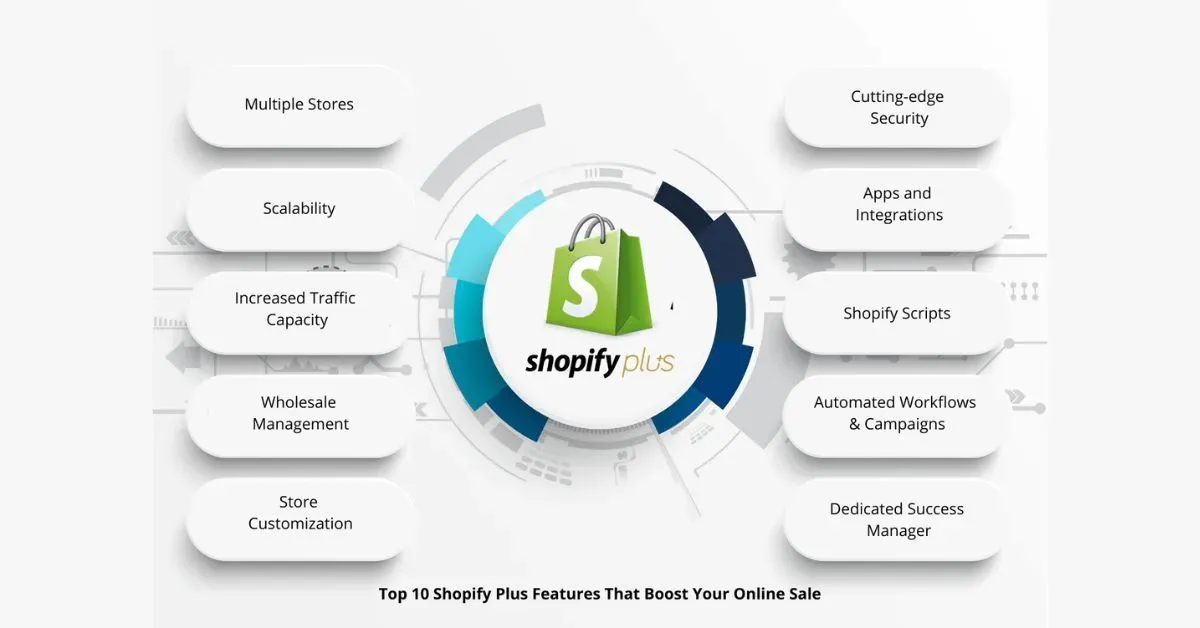
How to Choose the Best Shopify Plan for Your Dropshipping Business
2.1 Understand the Different Shopify Plans (Basic, Shopify, Advanced)
When asking yourself, "What Shopify Plan Should I Choose for Dropshipping?", understanding the plans' features is essential. Shopify offers:
Basic Plan ($19/month): Ideal for solo entrepreneurs or small businesses launching their online store. It features a customizable storefront, discount codes, and basic reporting tools. This plan provides essential tools to establish a professional online presence and effectively manage your store.
Shopify Plan ($49/month): Geared toward small teams or growing businesses, this plan includes everything in the Basic Plan, plus advanced analytics, professional reports, and up to five staff accounts. These features enable data-driven decisions and streamlined team management.
Advanced Plan ($299/month): Best for scaling businesses, this plan offers in-depth reporting, third-party calculated shipping rates, and up to 15 staff accounts. It includes all features of the Shopify Plan with added tools to support complex operations and reduce transaction fees.
Shopify Plus (Starting at $2,300/month): Tailored for large enterprises, this customizable solution provides advanced features like enhanced security, robust API resources, and the capability to handle high transaction volumes. Pricing is customized based on your business requirements and contract terms.
Pro Tip: Shopify offers a 3-day free trial to explore the platform before committing. Additionally, annual billing options can help save on subscription costs.
By assessing your business needs and comparing the features of each plan, you can choose the right Shopify package to support the growth and success of your dropshipping store.
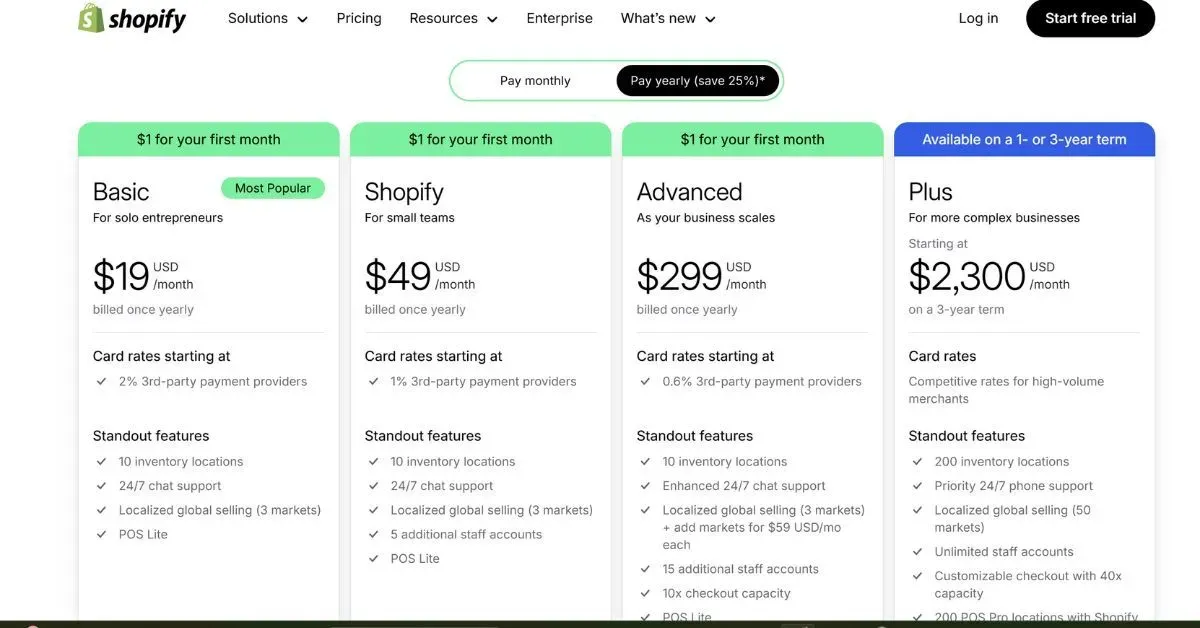
2.2 Evaluate Your Business Stage: Beginner, Scaling, or Established
Understanding where your business stands is crucial in choosing the right Shopify plan:
Beginner Stage: If you’re new to dropshipping and want to experiment with your product offerings, the Basic plan is a cost-effective way to start. It provides all the essential tools you need without overwhelming features.
Scaling Stage: As your business grows and you start seeing consistent sales, upgrading to the Shopify plan is a logical next step. The additional features, such as professional reports and reduced transaction fees, can save you money and offer insights to refine your strategy.
Established Stage: For businesses generating steady, high revenue, the Advanced plan is the best choice. Its advanced reporting tools and shipping flexibility allow you to manage a larger operation more efficiently.
2.3 Which Plan Fits Your Needs? Feature Comparison for Dropshipping
Selecting the optimal Shopify plan is a strategic decision that goes beyond basic cost comparisons. It requires an in-depth evaluation of each feature’s impact on your operational efficiency and scalability. The table below juxtaposes key features across plans and highlights their importance for a thriving dropshipping business.
| Plan | Price | Best For | Key Features |
| Basic Shopify | $39 per month (or $29 per month when paid annually) | Ideal for small-scale dropshipping startups |
|
| Shopify | $105 per month (or $79 per month when paid annually) | Suited for growing dropshipping businesses |
|
| Advanced Shopify | $399 per month (or $299 per month when paid annually) | Ideal for businesses generating over $1 million annually |
|
| Shopify Plus | Starting at $2,300 per month | Designed for scalable, globally operating businesses |
|
Key Questions to Ask Yourself
When deciding which plan suits your dropshipping business, consider these questions:
What is my current monthly revenue, and can I afford the next tier?
Do I need access to advanced reporting or specialized shipping options?
How important are lower transaction fees for my profit margins?
Am I planning to scale in the near future, and will additional features support my growth?
Choosing the Right Plan
The best Shopify plan for you will depend on your specific business needs and budget. Consider the following factors when making your decision:
Business size and stage: Are you just starting out or are you a growing business?
Sales volume: How many sales do you anticipate making each month?
Features: Which features are essential for your business?
Budget: How much are you willing to spend on a monthly subscription?
If you're unsure which plan is right for you, Shopify offers a 14-day free trial so you can test out the platform and see which plan best meets your needs.
Remember that Shopify's pricing plans and features may change over time, so it's always a good idea to check their official website for the most up-to-date information.
2.4 Balancing Cost and ROI: Tips to Maximize Your Budget
Start Small: Begin with the Basic plan to minimize costs while you learn the ropes of dropshipping.
Upgrade Strategically: Transition to higher plans only when your revenue justifies the investment.
Leverage Free Trials: Shopify offers a free trial period, so use it to explore features and identify the right plan for your needs.
Use Apps Wisely: Focus on apps that enhance efficiency, such as automation tools for order processing and analytics apps for performance tracking.
Monitor Metrics: Keep an eye on your expenses and revenue to ensure that the plan you choose delivers a positive ROI.
By carefully evaluating your needs and considering your business stage, you can choose the Shopify plan that aligns perfectly with your goals and maximizes your chances of dropshipping success.
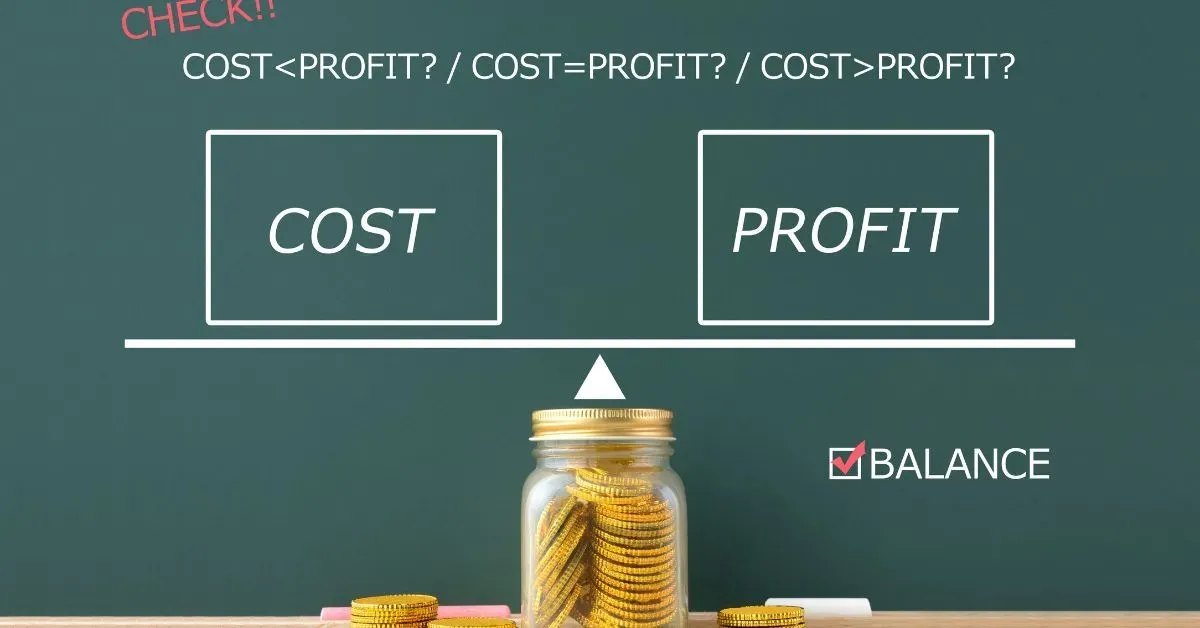
Unique Strategies to Succeed in Dropshipping on Shopify
Strong branding and marketing are vital regardless of what Shopify plan should I choose for dropshipping. Use Shopify tools and automation apps to stand out and attract repeat customers.
3.1 Focus on Building a Long-Term Brand
Don’t just sell products - create a brand that customers trust and remember. A well-built brand fosters customer loyalty and repeat purchases.
Logo Design: A professional logo adds instant credibility. Use tools like Canva or hire a designer to craft a logo that reflects your brand identity.
Consistent Branding: Maintain a cohesive look by using the same color schemes, fonts, and tone across your website, social media, and marketing materials.
Engaging Product Descriptions: Write clear, benefit-focused descriptions that address customer pain points and include SEO-friendly keywords to improve discoverability.
3.2 Master Multi-Channel Marketing to Drive Sales
Reaching customers where they are is key to scaling your business. A diverse marketing strategy ensures you maximize visibility and sales.
Social Media: Platforms like Instagram, TikTok, and Pinterest allow you to visually showcase your products. Share engaging posts, reels, and stories to connect with potential customers.
Email Marketing: Build and nurture your email list with tools like Klaviyo or Mailchimp. Send newsletters, exclusive promotions, and abandoned cart recovery emails to convert and retain customers.
Paid Ads: Invest in targeted Facebook and Google Ads to attract new customers. Use A/B testing to optimize campaigns and maximize your ROI.
Content Marketing: Create blog posts, videos, and guides relevant to your niche to attract organic traffic and establish your store as an authority in your field.
Read more: Shopify Email Marketing Made Easy - The Complete 2025 Guide
3.3 Scale Your Operations Through Automation
Automation tools save time and help you focus on growing your business. Shopify’s ecosystem of apps makes it easy to streamline your processes.
Automate Order Fulfillment: Use apps like Oberlo or Spocket to automatically process orders with suppliers, reducing manual work.
Recover Abandoned Carts: Leverage apps like Klaviyo or Shopify’s built-in tools to send reminders and recover lost sales.
Inventory Management: Prevent overselling and track stock levels with tools like Stock Sync or TradeGecko.
Analytics and Reporting: Monitor store performance and identify opportunities for growth with tools like Google Analytics or Shopify Analytics.
By focusing on strong branding, leveraging multi-channel marketing, and automating repetitive tasks, you can build a sustainable, scalable, and successful dropshipping business on Shopify.
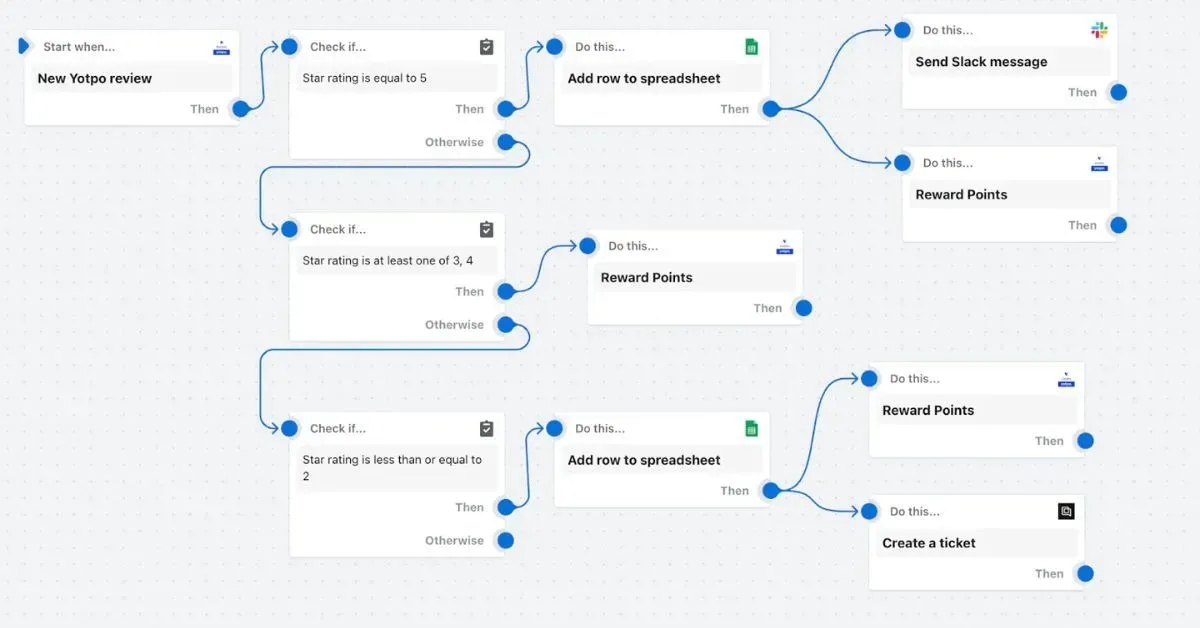
Inspiring Success Stories: Learn from Top Shopify Dropshipping Stores
Learning from successful Shopify stores helps answer the question, "What Shopify Plan Should I Choose for Dropshipping?" Case studies show how different plans support businesses at various stages.
4.1 Case Studies of Profitable Stores
- Subtle Asian Treats
This store, founded by Tze Hing Chan, specializes in bubble tea-inspired plush toys. By capitalizing on a popular trend and leveraging effective marketing strategies, the store achieved $19,000 in profit within two months. Visit: Subtle Asian Treats
- Meowingtons
Meowingtons focuses on a niche market targeting cat lovers by offering a wide range of cat-related products. With strong branding and a dedicated audience, the store has built a sustainable business. Visit: Meowingtons
4.2 Key Lessons to Apply to Your Own Store
Start with a Niche Product to Stand Out: By focusing on a specific audience or solving a particular problem, you can differentiate yourself from competitors. A niche approach helps you build a loyal customer base and tailor your marketing more effectively.
Prioritize Customer Service and Quick Responses: Exceptional customer service builds trust and encourages repeat business. Fast responses to inquiries, clear communication, and a willingness to resolve issues promptly can set you apart from other dropshipping stores.
Continuously Test and Optimize Your Store: Success in dropshipping requires ongoing improvement. Regularly test your website design, product descriptions, and marketing strategies to find what works best. Analyze data from tools like Shopify Analytics or Google Analytics to make informed decisions.
Invest in Marketing Strategies That Drive Traffic: Both case studies underscore the importance of effective marketing. Whether it’s through influencer partnerships, targeted ads, or content marketing, a strong promotional strategy is key to growth.
By studying these success stories and implementing the lessons learned, you can position your Shopify dropshipping store for sustainable growth and profitability. Remember, innovation, consistency, and a customer-first mindset are the cornerstones of long-term success.
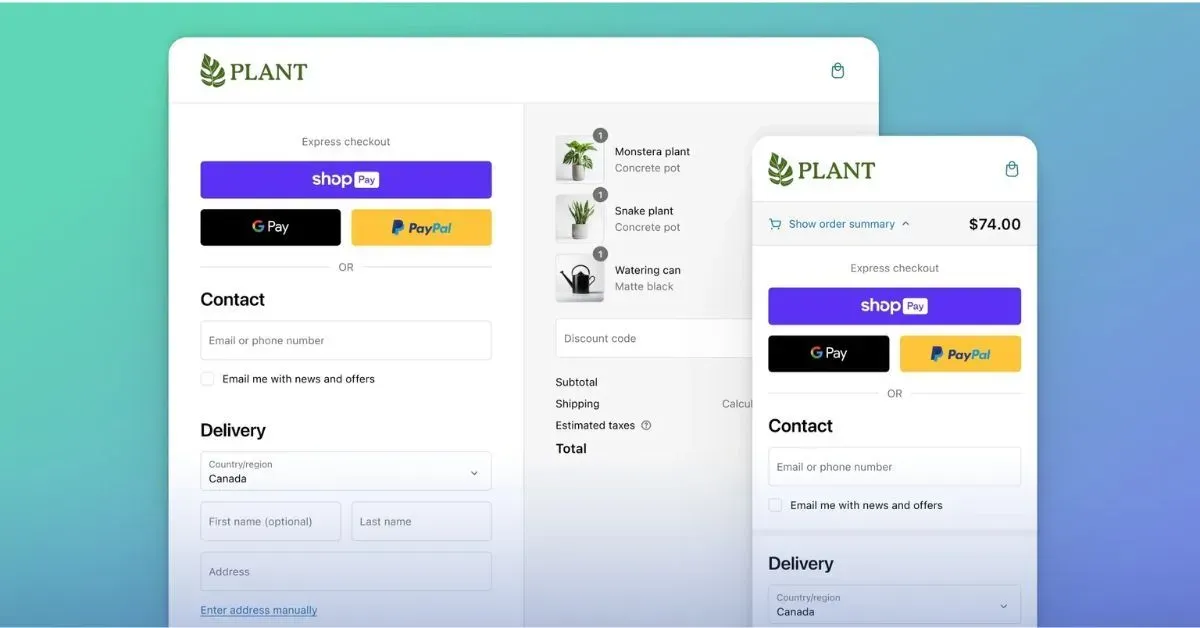
Step-by-Step Guide to Start Dropshipping with Shopify
Starting a dropshipping business on Shopify can seem overwhelming, but breaking it down into clear steps makes the process much more manageable. Here’s a comprehensive guide to help you launch a successful Shopify dropshipping store:
5.1 How to Find and Vet Reliable Suppliers
Your suppliers play a crucial role in the success of your dropshipping store. Reliable suppliers ensure quality products, timely delivery, and customer satisfaction. Here’s how to find and evaluate them:
Use Reputable Platforms: Platforms like AliExpress, Spocket, and Oberlo offer a wide range of products to source for your store. These platforms also integrate seamlessly with Shopify, making product importing and order processing simple.
Check Supplier Ratings and Reviews: Look for suppliers with high ratings, consistent positive reviews, and a proven track record of reliability.
Order Samples: Before listing products in your store, order samples to evaluate their quality, packaging, and shipping times. This ensures you only sell products that meet your standards.
Verify Communication and Responsiveness: Test how quickly and effectively suppliers respond to your queries. Clear and timely communication is vital for addressing issues like delays or defective products.
5.2 Create a Store That Converts Visitors into Buyers
Creating a conversion-optimized store is critical, but what Shopify plan should I choose for dropshipping to maximize customer retention? Features like mobile optimization and trust signals help across all plans.
Choose a Professional Theme: Shopify offers a variety of themes designed to cater to different industries. Pick a clean and professional theme that aligns with your brand and appeals to your target audience.
Write Compelling Product Descriptions: Highlight the benefits of your products and address common customer concerns. Use persuasive language and include SEO-friendly keywords to improve search visibility.
Include High-Quality Images: Clear, high-resolution product photos from multiple angles instill trust and help customers make informed decisions.
Optimize for Mobile Users: Many shoppers browse and purchase on their smartphones, so ensure your store is mobile-friendly with fast loading times and intuitive navigation.
Add Trust Signals: Incorporate customer reviews, secure payment badges, and clear shipping policies to build trust and reduce hesitation.
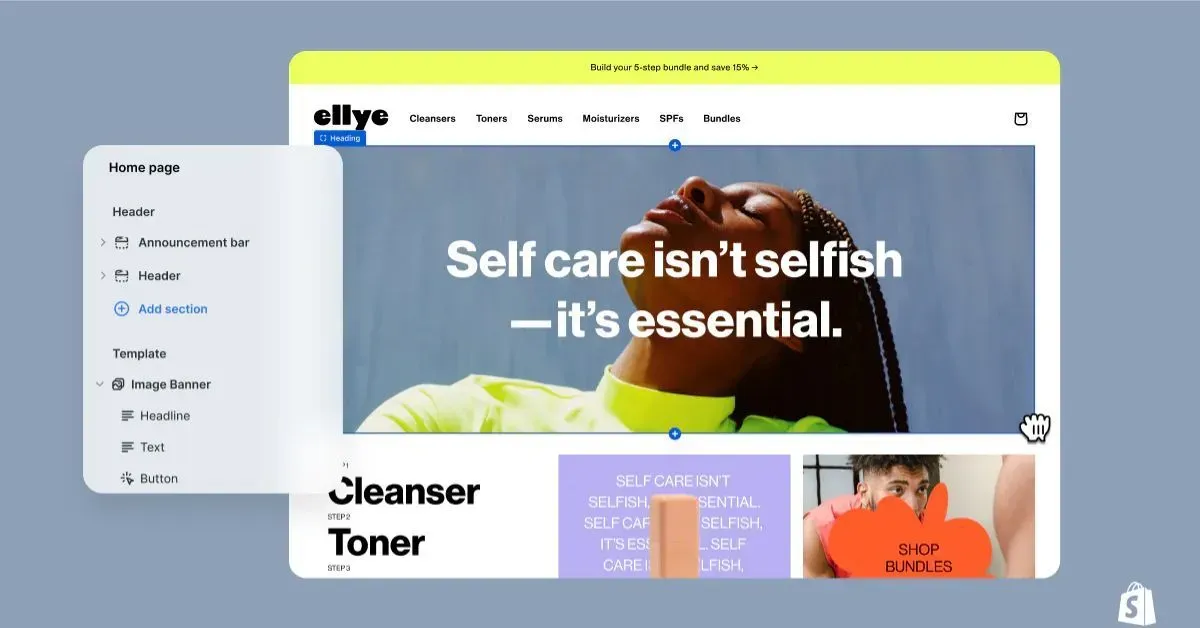
5.3 Effective Strategies to Launch and Promote Your Store
Once your store is ready, it’s time to spread the word and start attracting customers. Here’s how to create a buzz and drive sales:
Announce Your Launch: Use social media platforms like Instagram, Facebook, and TikTok to create excitement. Share posts, stories, and reels to showcase your products and invite followers to visit your store.
Leverage Your Email List: Send launch announcements, exclusive discounts, or early access offers to your email subscribers. Building anticipation among your audience can drive immediate traffic and sales.
Offer Limited-Time Discounts: Launching with special promotions, like limited-time discounts or free shipping offers, can encourage first-time buyers to take action.
Collaborate with Influencers: Partner with influencers who align with your brand to showcase your products to a wider audience. Influencers’ endorsements can drive traffic, build credibility, and boost sales.
Run Paid Ads: Use Facebook and Google Ads to target specific audiences. Experiment with A/B testing to identify the most effective ad formats and messaging.
By carefully sourcing suppliers, creating a conversion-optimized store, and using impactful promotional strategies, you can set the foundation for a thriving Shopify dropshipping business. Take the time to plan each step and continuously refine your approach to achieve long-term success.
Pitfalls to Avoid in Shopify Dropshipping
Even with a well-planned Shopify dropshipping store, mistakes can hinder your growth. Being aware of common pitfalls helps you stay on track and maintain steady progress.
6.1 Skipping Thorough Product Research
Not every product will be profitable, and choosing the wrong ones can lead to poor sales and wasted effort.
Research Demand: Use tools like Google Trends, Ecomhunt, or niche-specific apps to analyze current trends and consumer interest.
Validate Products: Check product reviews, supplier feedback, and market competition to determine the potential profitability.
Avoid Oversaturated Markets: While popular products may seem appealing, markets that are oversaturated often come with razor-thin profit margins.
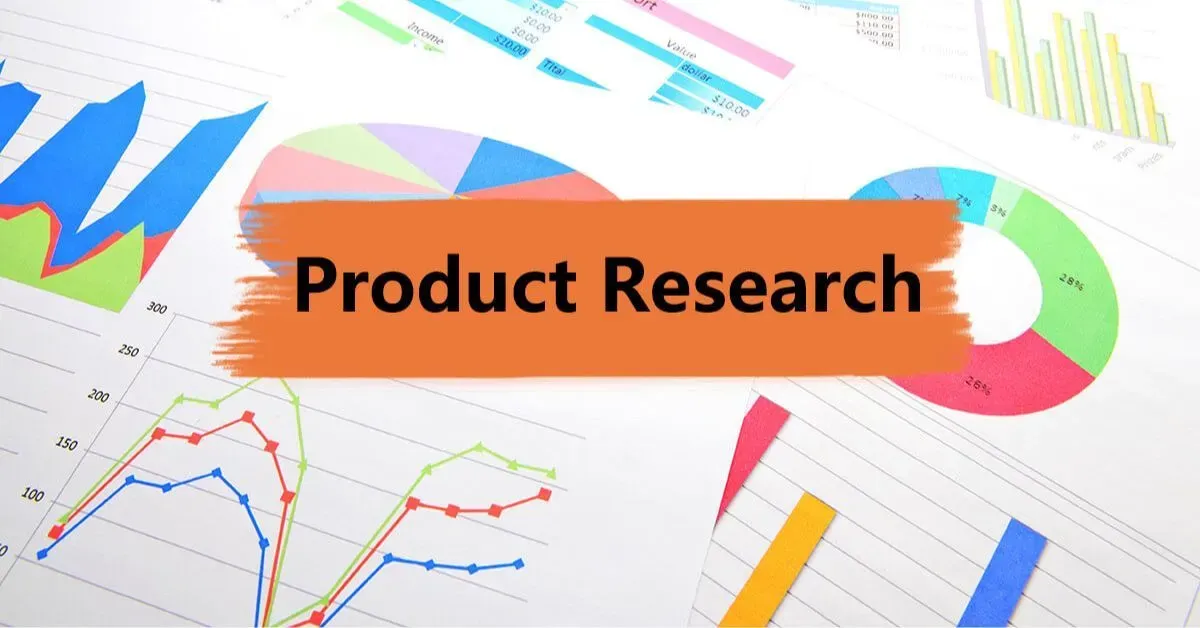
6.2 Underestimating the Importance of Customer Support
Customer support is the backbone of customer retention and reputation management. Poor service can lead to bad reviews and high refund rates.
Leverage Automation: Use Shopify chatbots or apps like Tidio to handle common queries and improve response times.
Set Up Clear Policies: Ensure your return, refund, and shipping policies are transparent and accessible to prevent misunderstandings.
Prioritize Communication: Keep customers informed about order statuses, delays, or issues to build trust and reduce disputes.
6.3 Staying Agile: Adapting to Market Trends
Market shifts are inevitable, so it’s vital to ask, "What Shopify Plan Should I Choose for Dropshipping?" A flexible plan supports ongoing growth and adapts to customer demand.
Monitor Trends Regularly: Stay updated using tools like Google Trends or industry newsletters.
Test New Products: Regularly add trending or seasonal items to your store to capitalize on new opportunities.
Update Marketing Strategies: Adjust your ad campaigns and messaging to align with current market behavior and preferences.

Essential Tools and Resources for Shopify Dropshipping Success
To run a successful Shopify dropshipping business, you’ll need the right tools and learning resources to streamline operations and stay informed.
7.1 Must-Have Shopify Apps for Dropshipping
Regardless of what Shopify plan should I choose for dropshipping, using the right apps like Oberlo, Klaviyo, and Loox helps streamline operations.
Oberlo / Spocket / Modalyst: For sourcing quality products and syncing inventory with your store.
Loox / Doran Product Reviews App & QA: To collect, manage, and display customer reviews, adding credibility to your products.
Klaviyo: For automated email marketing, such as abandoned cart recovery and product promotions.
Shopify Analytics: To track sales, monitor customer behavior, and identify areas for optimization.
Tidio / Richpanel: AI Customer Support: To provide real-time support and improve customer satisfaction.
7.2 Top Learning Resources for Beginners and Experts
Shopify Academy: Offers free courses on topics like setting up a store, marketing strategies, and scaling your business.
YouTube Channels: Channels like Oberlo, Wholesale Ted, and Shopify Experts share actionable tips and tutorials.
E-books and Blogs: Resources from successful dropshippers provide detailed case studies and insights. Examples include Dropshipping blogs on Shopify or niche-specific e-books.
Facebook Communities and Forums: Join dropshipping groups to exchange ideas, ask questions, and learn from others' experiences.

Choosing the right Shopify plan is a critical step toward dropshipping success in 2025. Start with a plan that fits your current business stage and scale as you grow. Combine Shopify’s powerful tools with a strong brand, effective marketing strategies, and the right apps to create a thriving e-commerce business. Remember, success in dropshipping requires continuous learning and adaptation, so stay proactive and keep refining your approach!

Hey! I'm Andrew Doan. Together, we'll build the foundation for a successful store and ensure it thrives! Let grow together!
Start Building Trust Today
Install the Product Reviews app to improve your store's credibility and boost sales with real customer reviews.
Get Started with Zero CostWhat to not miss out on our blog
Gain insightful knowledge and invaluable experiences from dedicated experts.
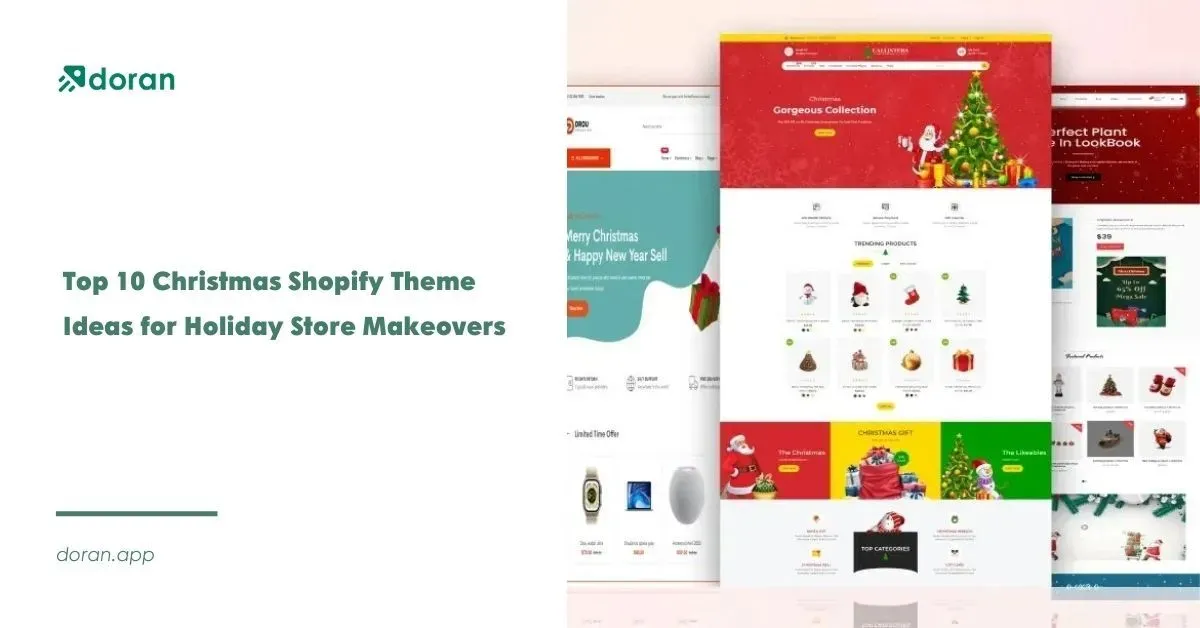
Top 10 Christmas Shopify Theme Ideas for Holiday Store Makeovers
Looking for a Christmas Shopify theme that runs fast to refresh your shop? Check out these festive picks now. Make your storefront shine this holiday season.

Newsletter
Get all the stories you need-to-know from the most powerful name in news delivered first thing every morning to your inbox
_1200x630.webp)
